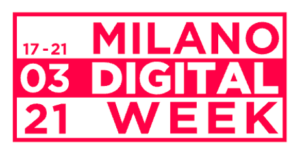The European Association of Automotive Suppliers, Clepa, has listed five themes that will play a key role in shaping the recovery. They are Vaccinations and relaunch of the economy, Electrification and recovery of automotive sales, Repaying the Covis debts, Implementation of European recovery fund, 2020 crisis aftermath with risks and upsides and Commission agenda and election cycles.
«Covid-19 – said Thorsten Muschal, member of the management of Faurecia and Clepa President – has hit the automotive supply industry particularly hard and the impact of the crisis will remain a major factor in the new year. Many in the supply industry, in the last months of 2020, have managed to recover a good portion of the earlier revenue losses, allowing for optimism as regards further recovery in 2021. However, uncertainty remains high given the volatility associated with the containment of the Covid-19 pandemic».
The words of the expert are clear: the glass is half-full, bit at the same time half-empty because optimism and realism about the damages in order to automotive supply industry are both alive.
Automotive sector could benefit from investments in power grid, charging infrastructure and 5G networks to enable transition to electrified and connected vehicles or industry 4.0, R&D projects into batteries and related components or autonomous technologies, projects supporting deployment of hydrogen in transport, and education projects to help reskilling employees and the future work force.
Clepa: threats and opportunities for the automotive
The state-of-the-art of the e-racing
We are entering the world of sports cars and, in particular, the laboratories of Casa Energica Motor Company, Italian manufacturer of electric vehicles, which is uninterruptedly working to set up at best the 18 Ego Corsa for the new season of the MotoE Championship at Jerez circuit, whose official tests are scheduled from 2nd to 4th March and from 12th to 14th April 2021.
The work includes also the shake-down of new components developed by Energica R&D specifically for the racing world. After the release, at the end of 2019, of the new power unit with 21.5 kWh battery, in less than one year Energica Motor Company has developed new technical solutions to reach a new performance dimension, intervening on weights to lighten the vehicle and on the asset to favour a better drive handling.
Energica is now taking yet another step to expand its commercial offerings, with the option of including the CHAdeMO charging system on Energica MY2021 motorcycles.
There is another Energica’s development about technology: «Our existing VCU (Vehicle Control Unit) – said Giampiero Testoni, CTO Energica Motor Company Spa – has been adapted to be able to implement the dialogue with the newly developed control unit. This interaction is fundamental to guarantee the technical demands of this standard.“
“Obviously we had to equip the motorcycle with the independent CHAdeMO fast charge socket to which we also added an additional socket for slow charging. Technical studies related to the design ensure we can always position the system under the seat of the vehicle, where the CCS Combo standard has already been present».
Milano Digital Week Workshop | Electric mobility, from research to charge column, the feasible course
 Will the electric car be for all indeed? Who is ready for a full electric car today? What do we need in Italy for the electric mobility diffusion?
Will the electric car be for all indeed? Who is ready for a full electric car today? What do we need in Italy for the electric mobility diffusion?
Electric mobility, from research to charge column, the feasible course
Workshop in live streaming, Friday 19th, from 10:00 a.m. to 1.00 p.m. at Milano Digital Week
The Workshop, organized by Electric Motor Engineering and Mecspe, will give concrete answers to these questions involving the whole chain of the present electric mobility world: from applied research to the energy distribution on the territory for the vehicle charge, listening also to the opinions by Bikeconomy international observatory, the indications by ELMO Interuniversity Consortium on the electrification of mobility, the witnesses by some manufacturers of solutions for the automotive industry and by producers of electric vehicles. Today, competences, technologies and infrastructures already enable the sustainable mobility course.
Conference moderator will be prof. Marco Villani, professor of Electric Machines Design and Electric Systems for Mobility at University of L’Aquila and technical director of Electric Motor Engineering review.
| 10.00 – 10.05 | Greetings and start of proceedings | Alessandro Garnero, editorial director Tecniche Nuove Group |
| 10.05 – 10.20 | Event presentation | Marco Villani, professor of Electric Machines Design and Electric Systems for Mobility at University of L’Aquila. |
| 10.20 – 10.40 | RESEARCH – Synergies at the service of research and sustainable development in the e-mobility sector | Ciro Attaianese, University of Naples Federico II and President of Elmo Consortium |
| 10.40 – 11.00 | ECONOMY & MOBILITY – Sustainable multi-mobility astride Next Generation EU and urban and territorial regeneration | Gianluca Santilli, President of Bikeconomy Observatory |
| 11.00 – 11.20 | AUTOMOTIVE, The electric car for all | Stefano Sordelli, Future Mobility Manager of Volkswagen Group Italia |
| 11.20 – 11.40 | AUTOMOTIVE, The electric mobility of the future: Bosch vision | Federico Brivio, Director, customer Electrification, Robert Bosch S.p.A. |
| 11.40 – 12.00 | TECNICA, European Project H2020 Refreedrive: new solutions of electric motors for automotive | Giuseppe Fabri, researcher at the Department of Industrial Engineering and Information and Economics of University of L’Aquila |
| 12.00 – 12.20 | TECHNOLOGY, Schaeffler innovative systems and components for sustainable mobility solutions | Eugenio Bizzocchi, Director Automotive Technologies Schaeffler Italia |
| 12.20 – 12.40 | INFRASTRUCTURES, Direct Current Infrastructures for electric vehicle charge – Protection and Sectioning | Marco Carminati, Global Direct Current & Arc Flash Mitigation Applications Specialist, ABB Group |
| 12.40 – 13.00 | UTILITY | ENEL |
Partnership for a winning charge in whole Europe
Since February 14th, DriWe charge columns have accepted the DKV CARD +Charge through Charge4Europe, joint venture DKV Euro Service and innogy eMobility Solutions. These two realities are matching their resources with an agreement aimed at promoting the electric mobility because one of the most important enabling factors of this green revolution is precisely the possibility of recharging almost everywhere, at home, in the office or in public charge points.
In Europe, nowadays hundreds of thousands of charge points are available, with many operators and several players. A key to improve the user experience of electric mobility users is reducing the number of cards and apps still necessary to enter all available infrastructures. “One key, one shot” is the mantra for all users.
Due to Charge4Europe, the joint venture established by DKV Euro Service and innogy eMobility Solutions, DKV has decided supplying a new function, included in the “same fuel card” customers are used to using for the charge, of any type and everywhere in Europe.
DriWe, one of the pioneer companies in electric mobility in Italy, with a relevant track record of EPC and O&M services in the whole Country, has been selected by DKV to join this new expansion plan, working together to find the best available way to simplify and to facilitate the user experience.

«We are honoured – stated Luca Secco, founder and CEO of DriWe – to work in such professional and efficient way with the management of Charge4Europe, contributing in carrying out this development plan, and in implementing together the best experience of transition towards the electric mobility».

As enthusiastic the witness by Christopher Schäckermann, managing director of Charge4Europe and director eMobility of DKV: «The roaming agreement signed with DriWe represents for Charge4Europe another significant stage towards the target of building the largest charge network in Europe. This agreement shares in further extending our network to over 130,000 acceptance points in all Europe».
Mega-factory of electric scooters according to Industry 4.0 principles
Ola, one of the leader mobility companies in the world, has selected ABB as one of its key partners for robotics and automation solutions for its mega-factory in India, which will release its so longed- for electric scooter.
The structure, expected to be ready and operational next months, is likely to be the largest factory of scooters in the world. In the main process lines, ABB automation solutions and ABB robots will be used, exploited also for the assembling lines of batteries and motors.
They will be digitally integrated into the factory enabled by the artificial intelligence, to optimize performances, the productivity and the quality of robot product.
The exploitation of ABB robots and automation solutions will assure the remote digital connectivity and the monitoring of robots that will use the artificial intelligence motor and the technological stack owned by Ola.
With an initial yearly capacity of 2 million units, the mega factory of Ola will create 10,000 workplaces and will act as global production hub of the company for both India and for the international markets in Europe, United Kingdom, Latin America, Australia and New Zealand. It is foreseen the mega-factory will be the most automated in the Country, with about 5,000 robots and autonomous-guided vehicles in use once the factory will be completely operational at its full capacity.
Bonfiglioli strengthens and takes over Sampingranaggi
Long time ago Bonfiglioli Spa had shown its interest in Sampingranaggi, due to the total synergy of the latter’s known-how with the Group’s design and manufacturing strategies.
Everything resulted in the recent takeover that includes the assets of the Italian and Chinese companies of Sampingranaggi, (Bentivoglio –BO, Funo di Argelato-BO and Shanghai-China), the respective warehouses, Sampingranaggi brand, patents, designs and products for robotics, as well as the total staff employment.
«Beyond the “affective” reunion and the total complementarity between Sampingranaggi and Bonfiglioli products, my first reflection is dedicated to the women and men of this reality, who today become an important branch of Bonfiglioli. Many times – the President Sonia Bonfiglioli added- we might have bought the plants to produce bevel gears (gears are the heart of reduction gears), but machines, without the human hand, are still atoms. Their competences, knowledge and expertise are the great heritage of Sampingranaggi that from now onwards are part of the large Bonfiglioli family».
The words by Fausto Carboni, CEO of the Group, are as enthusiastic: «SAMP represents a great opportunity for Bonfiglioli under several aspects. From the industrial point of view, it offers us the possibility of integrating some productions of strategic components, like bevel gears, while in terms of business development it allows us to enter the market of transmissions for robotics, which provides broad growth chances for the future, both in Italy and in China, through their local company that is part of the takeover».
The Italian course of sustainable mobility
On the occasion of Milano Digital Week, event that every year represents a precious opportunity to dialogue on the various issues aroused and supported by digital, Mecspe and Electric Motor Engineering review have organized the webinar “Electric mobility, from research to charge column, the feasible course”.

Spotlights are cast on the current state-of-the-art of electric mobility in Italy, without neglecting the comparison with the European situation. The event was chaired by Alessandro Garnero, Editorial director of Tecniche Nuove and moderated by Marco Villani, Professor of Electric Machines Design and Electric Systems for Mobility at University of L’Aquila.
One of the speeches concerned Elmo reality, National Interuniversity Consortium on the Electrification of Mobility, which involves the participation of research groups belonging to 15 Universities. The president Ciro Attaianese spoke of an irreversible revolution, which by 20 years will witness electric energy as primary fuelling source for cars «12 kw/h is the average daily consumption of a family, we can guess how the sustainable mobility is concretely feasible».
Bikeconomy Observatory, chaired by Gianluca Santilli, showed instead how the world is not going “towards the car”, but towards the multi-mobility, which includes an efficacious electric use that involves different means. Interesting also the concept of the “15 minutes” to reach all essential services, direction that Milan is gradually pursuing.
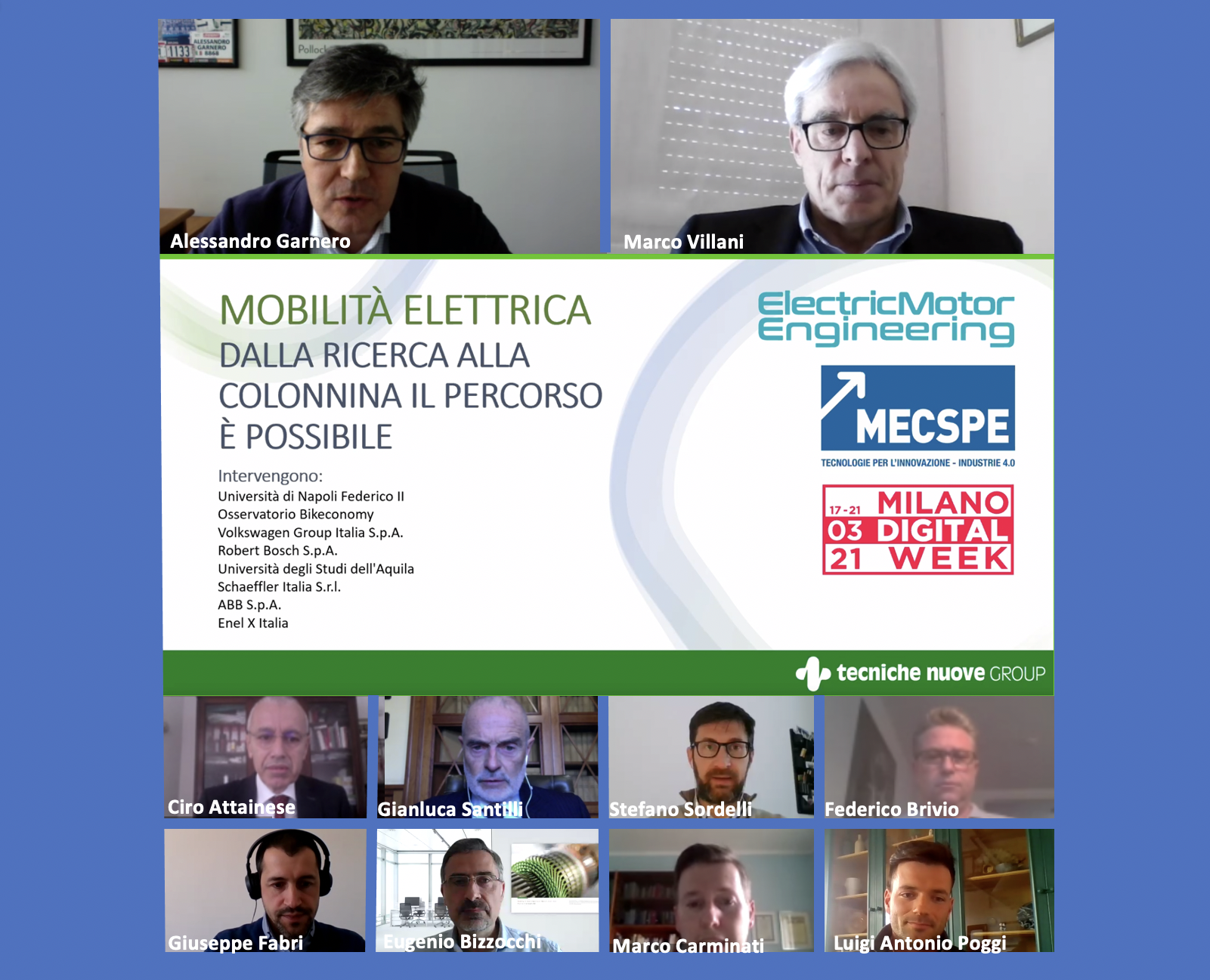
Workshop in live streaming, Friday 19th 2021 at Milano Digital Week
The floor to companies was given through Stefano Sordelli, Future Mobility Manager of Volkswagen Group Italia «The electric car for all is our business strategy. Prices are becoming aligned and all Groups are offering them: today, unlike the past, those who are going to shift to electric do not find hindrances but solutions for all requirements. Important also the approach to develop platforms dedicated to electric mobility». Other participating companies were Bosch, in the person of the Director customer Electrification Federico Brivio, who highlighted the importance of components for the efficiency of an electric vehicle, and Enel X Italia with Luigi Antonio Poggi, E-Mobility Ecosystem Development Manager.
Infrastructures were vertically treated by Eugenio Bizzocchi, Director Automotive Technologies Schaeffler Italia and Marco Carminati – Global Direct Current & Arc Flash Mitigation Applications Specialist of ABB Group.
Lively interest aroused the speech by Giuseppe Fabri, Researcher at the Department of Industrial Engineering and Information and Economics of University of L’Aquila, who dealt with the problem of the lack of provisioning of rare earths, necessary for permanent magnet synchronous motors, and therefore with the need of designing further technologies.
Rubber and metal extruded products for the international market
Oldrati Gomma Line is the nascent joint venture that can boast the synergy with the sound expertise of Gomma Line in the production ambit of extruded rubber and metal products, and with the technological and innovation know-how of Oldrati Group.
The decision of shaking hands taken by Oldrati Group and Gomma Line, two relevant realities in the rubber industry panorama, aims at creating synergies that will lead to new opportunities in East Europe and Russia markets.
Topicality is clear: in 2019 a free trade agreement was signed between Serbia and the Eurasian Economic Union, whose primary Country is Russia.
Gomma Line has operated on the market for about fifty years, with a strong specialization in rubber extrusion and moulding processes and with manufacturing sites in Serbia and Russia, whereas Oldrati Group, with almost sixty years of history, is one of the leader international Groups in the production of rubber, plastic and silicone goods, moulding and assembling, boasting a multimarket ranking.
In addition to productive synergies for the manufacturing of finished items, the agreement also provides for a collaboration verticalization: Gomma Line will have the opportunity of benefit- ting from the Compounding Division of Oldrati Group and from the competences of the Materials Team, so enhancing the supply chain’s force and extending the technological service on materials.
Playing with electric motors
Powerup 4.0 electric small-size motor can be adapted to whatever model aircraft made of paper, balsa or other materials, to provide a thruster can transform a child’s game into a didactic flight experience.
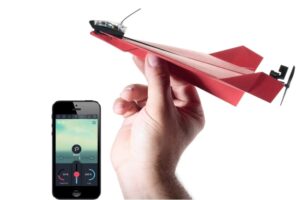 The latest version is equipped with electronic stability control, a minicomputer for the flight attitude control, a gyroscope, two independent motors with differentiated thrust, electric motor, acrobatic performances, assisted take-off and landing. The thrust generated by this propulsion plant can make the model aircraft fly at a maximum speedof 36 km/h, with eventual aerodynamic “imperfections” that will be rebalanced and corrected.
The latest version is equipped with electronic stability control, a minicomputer for the flight attitude control, a gyroscope, two independent motors with differentiated thrust, electric motor, acrobatic performances, assisted take-off and landing. The thrust generated by this propulsion plant can make the model aircraft fly at a maximum speedof 36 km/h, with eventual aerodynamic “imperfections” that will be rebalanced and corrected.
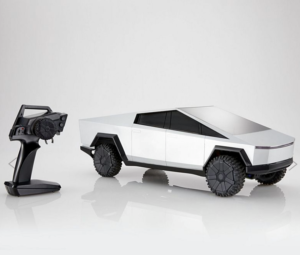 Another phenomenon in the model world belongs to the electric pickup of Tesla Cybertruck, with Hot Wheels brand. The radio-controlled model launched at the end of 2020 was impressively sold-out in very short time and Mattel has started the reorder for a supply expected to restart next May. Customers are offered two sizes of the radio-controlled Tesla Cybetruck: one in 1:64 scale and the other, the most coveted, almost 60-centimetre long, can comfort- ably move on whatever ground, turn on front and rear lights and offer two drive modalities tranquil “chill” and “sport”.
Another phenomenon in the model world belongs to the electric pickup of Tesla Cybertruck, with Hot Wheels brand. The radio-controlled model launched at the end of 2020 was impressively sold-out in very short time and Mattel has started the reorder for a supply expected to restart next May. Customers are offered two sizes of the radio-controlled Tesla Cybetruck: one in 1:64 scale and the other, the most coveted, almost 60-centimetre long, can comfort- ably move on whatever ground, turn on front and rear lights and offer two drive modalities tranquil “chill” and “sport”.
The rear can slide turn into a ramp and the body- work can be removed to enter interiors with battery and transmission.
Public investment plans and electric cars
With the launch of the 2021 Budget Law, the sales of cars with scrapping of the old vehicle or, without low environmental impact or with zero impact can theoretically rely on an important boost.
With the so-called Ecobonus whose reservations have been managed by dealers through a dedicated platform already since last January 18th, the Government has made available a plafond worth 700 million Euros for Italian citizens.
They concern the cars in M1 category and L1 motorbikes; besides commercial vehicles (N1). The models characterized by Co2 emissions included between zero and 20 grams per kilometre or between 21 and 60 grams per kilometre benefit from 120 millions.
Clearly, the models with fully electrified traction and plug-in hybrid are part of them, and the above-mentioned 120 millions must be summed to the 270 already allocated with other previous legislative measures.
Therefore, the total at stake amounts to 390 millions. Concerning motors with emissions ranging from zero to 20 grams per kilometre, the discount amounts to 6,000 in case of simultaneous scrapping of the old vehicle or, without scrapping, to 4,000 Euros.
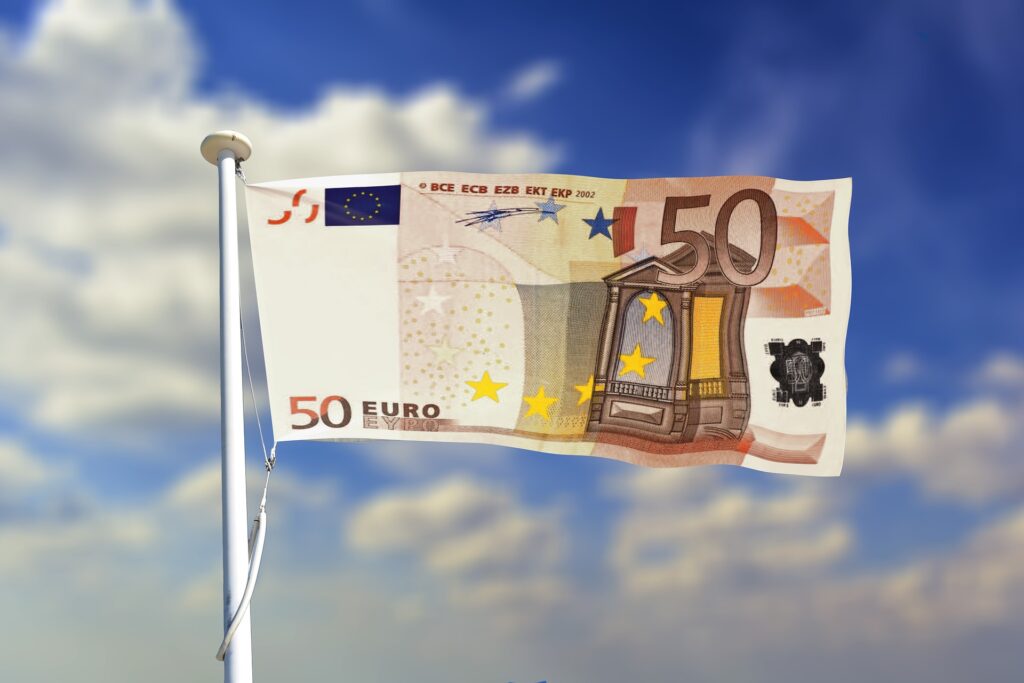
For those in 21-60 gram range, the contribution is 2,500 Euros with scrapping and 1,500 without. In both cases the initiative will remain in force for the whole current year, unlike reliefs addressing the range of emissions from 61 to 135 grams per kilometre, taking advantage of a 250 million Euro fund.
In this case the discount is assured only upon old vehicle scraping and reaches 1,500 Euro maximum. Not only. What above listed must be added to the discounts, for a maximum of 2,000 Euros, made by dealers, once more of higher relevance when you opt for the scrapping.
Tradition wins
When we are writing, it seems Italians’ preferences are oriented to conventional motors, anyway undoubtedly less polluting than in the past, which still at the beginning of February had grabbed the biggest number of applications for the access to the Bonus.
In fact, 30% of the allocation made at the beginning of the year was already committed but just 170 were still accessible out of the 250 millions provided for standard diesel engines. On the contrary, only eight million Euros over-all have been required for the purchase of a full electric or of a plug-in, versus 120 potentially payable. Nevertheless, in a year such as 2020, during which according to UNRAE (Unione nazionale rappresentanti autoveicoli esteri) car sales in the Peninsula were affected by an impressive -27%, hybrid and electric models gained ground.
In other words, of creating those surrounding conditions in virtue of which enterprises in automotive induced activities and other beginners coming from other sectors might decide to invest in e-mobility profitably.
A modest proposal
Studies carried out in the United States and here reported by Il Sole 24 Ore have calculated that the first 29 original equipment manufacturers (OEM) in the Country are planning to invest at least 300 billion dollars in the next decade in the electric vehicle development. In Italy, in recent times the research and information association Motus-E has taken care of making the new mobility generate opportunities n cascade for the largest possible number of players. Among its supporting and ordinary members it can boast, just to mention some of them, Stellantis and Renault, Tesla and Edison, Bitron, ABB and Enel. It has recently published and presented a series of proposals on the reallocation of a part of the funds provided for by National Recovery and Resilience Plan (Piano nazionale di ripresa e resilienza -PNRR) in the ambit of Next Generation EU.
In this specific case, not only the hypothesis that 18.7 billions of the Plan’s heritage support «the development of an increasingly sustainable mobility of people and goods» arouses interest but rather, instead, the areas where to invest them. First of all, the document The great opportunity for zero emission mobility suggests allocating 10.93 billions to the demand boost by 2026; 3.27 billions to infrastructures and 4.51 billions to the offer. In the latter segment rank the numerous Italian excellences in the mechanical and electronic components, maybe already integral part of the supply chain of zero impact motors and with a good ranking in world markets.
in the neighbouring periphery of the European Union the different nations are autonomously choosing the most suitable strategies and courses to hit it. Concerning mobility, the information service specialized in business fleets fleeteurope.com has provided an overview of the mechanisms of incentive for green vehicles and of disincentives for polluting engines in force in various Countries, by order of efficacy. North Europe States have adopted the most efficacious measures in favour of the e-mobility, starting from Norway where EV are free from registration and VAT costs and enjoy insurance reliefs. Sweden follows with its bonus-malus scheme and tax reliefs for electric; then Denmark, where conventional engines are subjected to tax increases. Not fortuitously Norway is the first State where the sales of zero impact cars have exceeded 50% of the total, but also United Kingdom’s plans are ambitious, as the electric share jumped from 3 to 10% from 2019 ti 2020 and Ev are expected to surpass diesel in 2021. Germany foresees that 15% of car sales in 2021 are apanage of EV but until now temporary jeopardized measures to favour the sector resulted in just about 250,000 full electric models out of around 48 million vehicles overall at the end of last year.
Tax exemption mechanisms are in force in France, Austria, Portugal and Belgium (zeroed taxes also for the hybrid with the lowest emission levels) and Spain, where however the measures in course differ from region to region. In The Netherlands the owners of electric four-wheels have not to pay any circulation tax whereas the Republic of Ireland mirrors the Danish example, with increased taxes for polluting vehicles and reliefs for more ecologic ones.
Supply chain wanted
70% of the components manufactured in Italy are sold beyond the border. Be- sides, as the general secretary of Motus-E, Dino Marcozzi wrote, «if on one hand we are still late in the race to the production of automotive cells on the national territory, market developments make room for the production of the cells diffused today, such as NMC 811, and provide an unrepeatable opportunity for the R&D system and the production of new chemicals, involving a chemical field currently featuring excellent level». Moreover: «The industry of internal distribution components and ICE pumping must match the reconversion for the production of new auxiliary systems of traction systems, especially of the battery pack, integrated with the ones for the passenger compartment.
Our enterprises’ competences in circular economy are significant: Battery Directive EU issues challenging targets of reuse and recycling and Italy would have the skills and the resources to exploit this opportunity». Neither, in the opinion of Marcozzi, former Chief procurement officer of Enel Green Energy, the «native digital» nature of electric cars can be neglected. The software development of vehicles will be a decisive range of action for both component manufacturers and suppliers, which will be enabled to work on open solutions and offer even hardly conceivable services at present. Electric vehicles are real digital platforms» rich in potentialities: «Software packages for the improvement of performances, predictive and remote maintenances, integration with MaaS (Machine as a Service) applications, machine learning for autonomous driving» are only some of the currently feasible courses.
(by Roberto Carminati)




